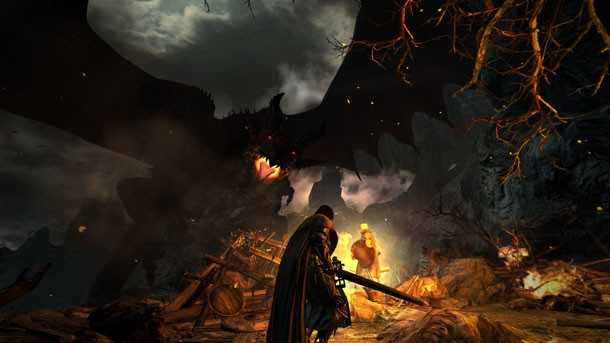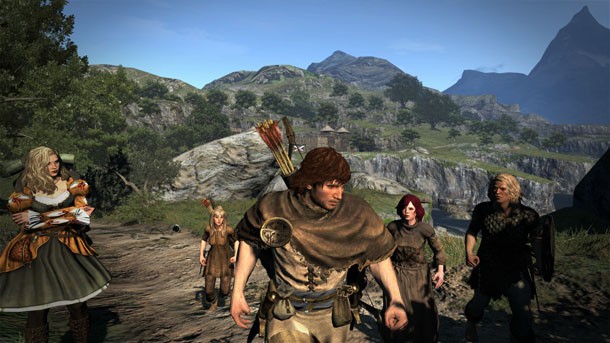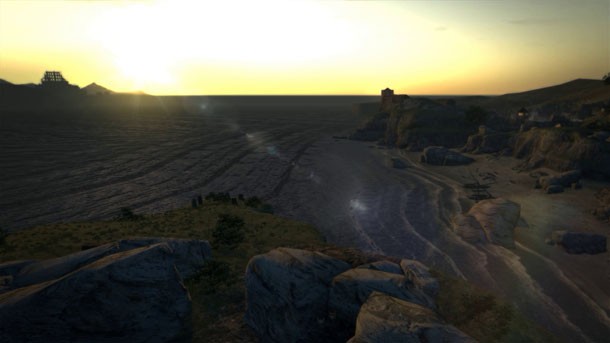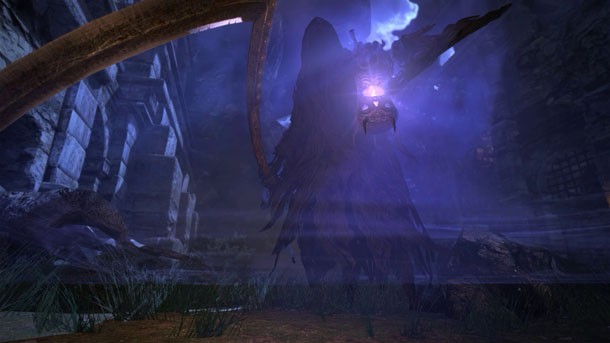Please support Game Informer. Print magazine subscriptions are less than $2 per issue
Five Reasons You Shouldn't Miss Dragon's Dogma (Again)

Dragon’s Dogma releases today on PlayStation 4 and Xbox One, a fact you may be tempted to dismiss as part of the growing trend of companies porting last-gen games to current-gen systems. And admittedly, yes, that’s what this is. However, if you haven’t played Dragon’s Dogma in any of its previous incarnations, you shouldn’t let this innovative open-world RPG pass you by again.
You play as an “Arisen,” and you explore Capcom’s ambitious fantasy setting in search of the dragon that literally stole your heart – but the journey is more than a typical hero’s quest. That core hasn’t changed in the five years since the original Dragon’s Dogma came out.
This new release has a handful of technical improvements, like running in 1080p and a more stable framerate. The Dark Arisen expansion is also part of the package, along with tweaks made for the PC version (including some free gear and unlimited fast-travel). Even if the fundamentals haven’t changed much on PS4 and Xbox One, this re-release is the perfect excuse to give an underappreciated gem another chance.
The rough spots can be frustrating, but persevering through them means you get to experience the great things Dragon’s Dogma has to offer. Here are five of those things.

1. Pawns
The system Dragon’s Dogma has in place for creating your adventuring party is simply brilliant. You customize a pawn (a human-like being sworn to serve you), and that character is your companion through the entire game. That means you can create a reasonably well-balanced duo; if your Arisen is a warrior, your main pawn can be a mage, which covers your bases in terms of damage and healing.
But you have four slots in your party, not just two. That’s where this system gets really cool; every player who is connected online essentially gets their main pawns copied to the game’s servers. You still have access to it, but other players are also able to simultaneously use a version of the pawn you created. That means that you fill the remaining vacancies in your party with pawns from this player-created pool, hand-picking your companions based on a variety of different factors. Maybe you like how they look (I’ve seen facsimiles of various celebrities and other gaming characters). Maybe you want particular skills they have equipped. Maybe your friends made them, and you want to show your support.
Recruiting other players’ pawns doesn’t just benefit you. Once you release the hired pawns (their levels remain static in your service, so you outpace them regularly), they bring bonuses back to their creators’ games. For example, let’s say someone hires your main pawn. You’re still using that pawn during this time, but so is someone else. When the other player is done, your pawn gains knowledge they learned in the other player’s service, which includes details about monsters, quests, and regions. They also bring back Rift Crystals, a currency you can use to hire more powerful pawns yourself.
This whole approach fosters a unique and creative community in which players are rewarded for helping each other. You want your pawn to be useful to you, but more importantly, you want it to be useful (and eye-catching) to other players. The more other players use your pawn, the better your gaming experience gets, which encourages you to keep your pawn on the cutting edge in terms of abilities and gear.

2. Combat and Vocations
This is cramming a lot in one category, but the flexibility and fun of combat in Dragon’s Dogma are major draws, and they manifest in two big ways. The first is the core mechanics and controls when you are actively fighting. While getting acclimated to the attack animations, casting delay, and targeting takes time, the investment pays off in heart-pounding battles with mythical beasts. Unleashing your repertoire of moves feels great, and your A.I. pawns can hold their own, so you don’t need to worry about babysitting them. You can also climb enormous monsters and stab them, which never gets old.
Another thing that keeps combat fresh is the vocation system, which governs your (and your main pawn’s) progression. As you advance in your vocation, new abilities become available for purchase. That’s standard for RPGs, but you can also change vocation easily. If you’re sick of being a regular fighter, maybe you want to specialize as a warrior to wield two-handed weapons. Or maybe try the mystic knight, a fighter/mage hybrid. Or just go straight mage and focus on casting. I love how different the vocations feel; a spellcaster offers a much different combat experience than a melee fighter, but they all offer equally viable and satisfying paths through the game. While I personally prefer to max out one playstyle before experimenting with another, the freedom is there for those who want it.

3. The World
Capcom isn’t exactly the first name that comes to mind when you think of open-world RPGs, but the setting of Dragon’s Dogma is ambitious and impressive. The land of Gransys is huge, and though that sometimes means you spend a lot of time going from place to place, it also means that the world becomes familiar the more time you spend in it. While the landscape isn’t dense with content (you aren’t picking up sidequests every few steps), its design feels deliberate, and that goes a long way toward creating an immersive setting.
I also appreciate the sense of discovery that comes along with your exploration. You don’t always have clear quest markers guiding you, so part of the fun is seeing what lies behind a mountain or at the bottom of a valley. Sometimes what you find is a terrifying monster that defeats you instantly, but you might also find a treasure or quest that makes the ordeal worthwhile. This deft balance of tension, danger, and payoff pervades any adventure through Gransys.
4. The Ending
I can’t reveal too much about this, because I don’t want to ruin one of the best parts of Dragon’s Dogma. The final hours are weird in a way you aren’t really prepared for, and that surprise works in the game’s favor big-time. I was having fun before I beat it, but the ending cemented it as one of my favorite RPGs of the last generation.

5. Bitterblack Isle
Just when you think it’s over, Dragon’s Dogma is not even close to being over. The base game has a host of post-game activities (and new game+), but the Dark Arisen expansion contains a huge chunk of new content on Bitterblack Isle. While you can technically access this before the credits roll, you can’t do much there without a high-level character. Bitterblack Isle has new areas to explore, new bosses test your skills, and new equipment that brings your Arisen to near-godhood. Even once the core narrative of Dragon’s Dogma is complete, visiting Bitterblack Isle is a great way to prolong your time with an amazing game.










